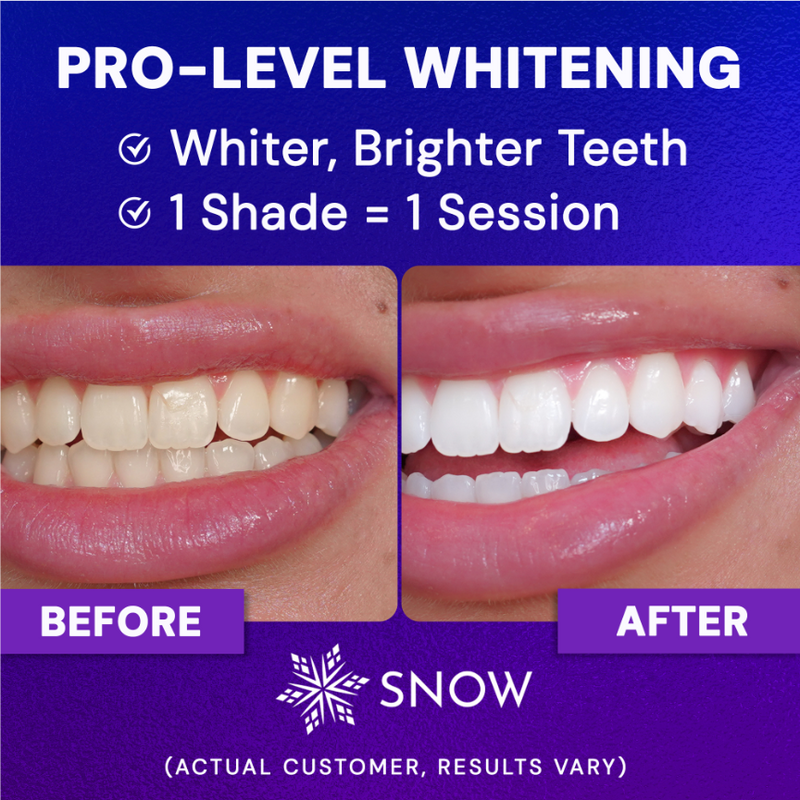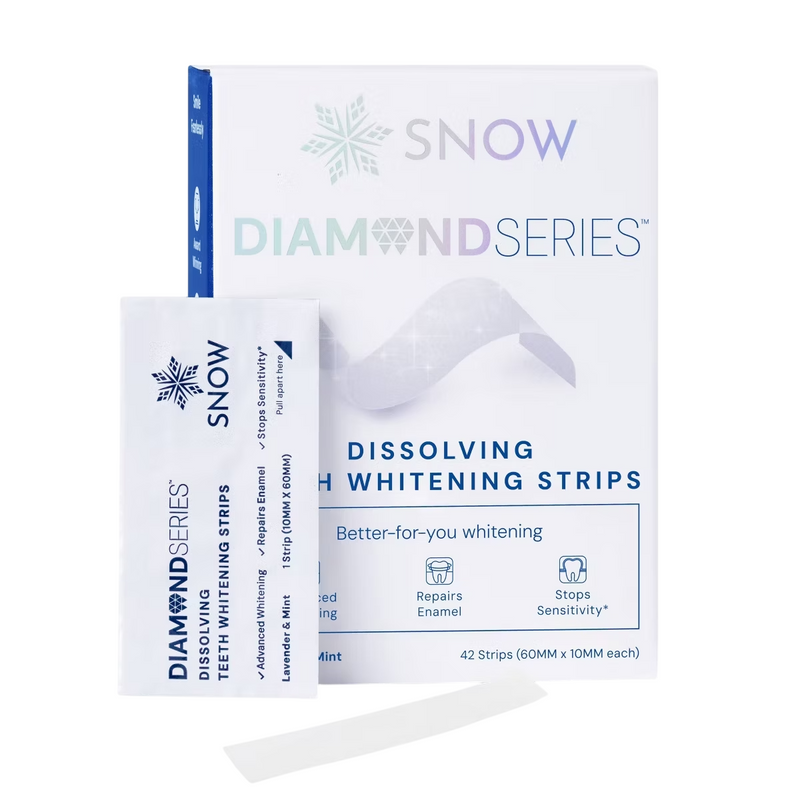When it comes to maintaining a beautiful smile, you've got more than a few enemies to consider. Sugary and acidic foods have the potential to wear away your tooth enamel and create cavities, while certain foods and drinks are capable of staining your teeth and dimming your smile.
These issues may not develop in the same way for everyone, and it's not always easy to distinguish between cavities and stains. If you've noticed some unusual discoloration on a tooth, you may be confused as to whether you need treatment for a cavity or a stain.
Fortunately, cavities and stains each have distinguishing features you can watch out for. And for anyone looking for a healthy and attractive smile, it is helpful to understand how to prevent and treat both of these issues.
What Is a Tooth Cavity?
A tooth cavity is an issue that occurs when an area of protective tooth enamel is damaged by bacterial acids, and a hole is created on the surface of the tooth. If left untreated, the hole can continue to grow, reaching deeper and deeper into the more sensitive layers of the tooth. An untreated cavity may result in an infection or tooth loss.
How Do Tooth Cavities Form?
Some people may be more susceptible to cavities than others, but tooth decay will not just form on its own. For a tooth cavity to form, at least one factor should be present, such as:
Plaque Buildup
Plaque is a sticky film that is constantly developing in your mouth. It is made of saliva, food particles, and a few different types of bacteria. If this plaque is allowed to build up and linger long enough, it can start damaging your teeth, and you may begin developing cavities.
After a while, plaque will harden into a substance called tartar. Tartar is significantly more difficult to remove from your teeth and requires the help of a dentist.
Sugary Foods and Drinks
It is an unfortunate fact that sugary foods are notoriously bad for your teeth. The bacteria in your mouth digest the sugars you consume and turn them into acids that can dissolve enamel and cause tooth decay.
Acidic Foods and Drinks
Sugary foods are not the only source of damaging acids. Even certain drinks can damage your teeth, and foods like meats and fish, which we may not typically consider acidic, can also contribute. These foods and drinks don’t feed bacteria that create enamel-eroding acid, but they can create acidic damage themselves.
Poor Oral Hygiene
Perhaps the most common reason why someone might develop a cavity or tooth decay is that they simply don't practice good oral hygiene. If you brush and floss properly, you can consume sugary or acidic foods in moderation. Without proper oral hygiene, however, your teeth remain unprotected and vulnerable to these foods.
Proper oral hygiene helps remove the plaque and food debris from your mouth so it doesn't have a chance to build up, become tartar, and start along the path toward tooth decay.
How to Prevent Cavities
If you currently have no cavities and would like to maintain a problem-free smile, you can:
- Brush your teeth twice a day
- Floss once a day
- Reduce your sugar intake
- Moderately consume acidic drinks and foods
- See your dentist regularly
To prevent tooth decay, brushing and flossing regularly and being mindful of your diet will go a long way, particularly if you're using fluoride toothpaste. However, improving your oral hygiene will not be enough. You will also need to see your dentist once every six months or so for a checkup and teeth cleaning.
How Is Tooth Decay Treated?
If you have taken these necessary measures and still find yourself with tooth decay, don't worry — there are various ways to treat cavities and protect your teeth. Some of the most common cavity treatments include:
Fluoride Treatments
Fluoride can help your tooth enamel repair itself in instances where the cavities are caught in their earliest stages. However, more serious cavities will require more significant intervention.
Dental Fillings
Once the tooth decay has become significant enough that there's a visible hole, your dentist will need to use a dental filling to prevent it from spreading further. First, your dentist will remove the decay, and then they will fill in the hole with either a metal like silver or gold, or with a tooth-colored composite resin.
Dental Crowns
There comes a certain point where decayed teeth can no longer be treated with a filling. When this happens, dental crowns are a common option for providing them with the support and protection they need. A crown is a prosthetic cap that can be fitted over the decayed tooth after the decay has been removed.
Root Canal Therapy
If the decay finds its way into the inner tooth, it can lead to an infection. Teeth that have become infected often require a root canal in order to be preserved. Root canals are designed to remove the infected dental pulp.
Extraction
The last option with severe decay is to remove the entire tooth. While your dentist will do what they can to save a tooth, it is not always possible to avoid extraction. Fortunately, there are multiple tooth replacement options available.
What Are Tooth Stains?
A tooth stain is what occurs when certain foods, drinks, medicines, and other substances cause a tooth to become discolored. There are many instances in which this issue is preventable, but sometimes the best you can do is seek products or treatments designed to remove stains from teeth.
What Can Stain Teeth?
Various substances can alter the appearance of your smile. Some of the most common among them include:
- Red wine
- Coffee and tea
- Fruit juice
- Tomato sauce
- Curry
- Dark-colored berries
- Soy sauce
- Balsamic vinegar
- Smoking and chewing tobacco
- Certain medications
Stains are largely preventable, and you don't even need to eliminate the above foods from your diet. You just need to moderate your consumption of them and rinse your mouth when you do consume them.
However, certain causes of tooth stains or tooth discoloration are not so easy to avoid.
If you're on certain medications that stain teeth, you will have to wait until you're no longer taking them to try to brighten your smile. If your tooth discoloration is a product of aging, then you can look into teeth whitening to combat it.
How to Remove Stains from Your Teeth
Worrying about stains and discoloration can affect your self-esteem and make it difficult to smile with confidence. Fortunately, there are plenty of ways to combat those surface stains and make your teeth whiter than ever before.
Whitening Toothpaste
If you want a simple, at-home remedy that requires no more work than your regular oral hygiene routine does, consider a whitening toothpaste. These products are designed to fight surface stains while they clean your teeth.
Teeth Whitening Kits
Toothpaste is a dependable way to remove dental stains, but they're not quite as powerful as an at-home whitening kit. With these kits, you use special trays to apply a whitening product to your teeth in order to brighten your smile on your own time.
Professional Whitening
A professional dentist whitening is perhaps the most effective way to fight tooth discoloration and tooth stains. However, it is also the most expensive. Professional whitening, while more thorough, is essentially the same as an at-home kit, but usually with stronger products.
Cavity vs. Stain: Distinguishing Between the Two
Even if you understand how a cavity and tooth stain differs by definition, you may still find it difficult to distinguish between them in your own smile. At first glance, they can appear quite similar, but there are several tips to help you differentiate between the two if you find a suspicious spot on your tooth:
Take a Closer Look
When cavities have had time to develop into more serious tooth decay, they will appear as visible holes in the tooth. When they're in their infancy, cavities and stains look rather similar.
The cavity will begin as a dark-looking spot on the tooth that's not dissimilar to staining. However, a cavity will be centralized in a specific area, which is not something that a tooth stain will do. If the dark spot isn't covering the tooth, it's either a cavity or teeth discoloration.
Is It Shrinking or Growing?
A cavity will never shrink. It will only appear to remain the same or continue to spread and grow. A tooth stain, however, can appear to shrink or grow, or even disappear.
If you find that any dark spots on your teeth either come and go or shrink, they are more than likely tooth stains.
Is It Painful?
One of the more clear-cut differences between cavities and stains is the fact that a tooth cavity will eventually start to hurt. As the decay spreads, it exposes the sensitive inner tooth, and inflammation can occur.
If you have a toothache where that dark spot has appeared, it is probably a cavity rather than a stain.
Is It Sensitive?
In the same way that decay can cause the affected tooth to ache, it can also increase the level of sensitivity that the tooth has to hot or cold foods.
If you feel as though you can no longer eat ice cream or drink tea without tooth pain, a cavity is likely to blame.
Cavities and Teeth Stains Frequently Asked Questions
Some of the most commonly asked questions regarding stained teeth and cavities include:
What Color Can Dental Stains Be?
While a cavity will generally range between gray and black, dental stains can come in a variety of colors. Depending on the cause of the staining, the stain might be yellow, brown, black, red, or even purple or orange.
Can You Reverse Tooth Decay?
It is possible to reverse tooth decay, but only in its earliest stages. Fluoride treatments can help remineralize the affected tooth in instances of light enamel erosion.
What Whitening Agent Is Used in Teeth Whitening Products?
Not all products use the same agents. But for the most part, hydrogen peroxide is used to penetrate beneath the tooth surface and remove staining.
Tooth Stain or Cavity? A Brief Review
It is crucial for both your oral health and your self-esteem to ensure that your teeth stay stain and cavity-free.
Cavities are holes in the teeth, while stains are pigmentation that has penetrated beneath the tooth surface. That decay will eventually cause tooth sensitivity and require restorative dental treatments, while the stains can be addressed with whitening products.
If you want to prevent cavities, stains, and teeth discoloration, brush your teeth and floss regularly, do not eat too many acidic or sugary foods, and go in for dental care regularly.
And if you do find yourself with tooth decay, don't delay dental treatment, as the damaged tooth will not get better without it. Early dental care is much faster, easier, and more comfortable than the treatment required after waiting until the cavity has overtaken the entire tooth.
Combat Those Tooth Stains with SNOW
SNOW offers a range of vegan and cruelty-free whitening products that can help you beat those tooth stains and achieve the bright and beautiful smile you've always wanted, in the convenience of your own home. Check out our award-winning lineup of teeth whitening products to elevate your smile.








































































